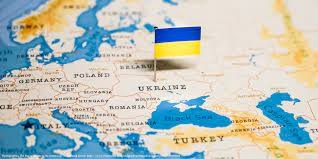The current Ukrainian conflict is putting decades of military theory to the test in practice. Far from falling into the subjectivity of one side or the other, the States and their armies should look at the successes and errors committed in the war. The war in Ukraine has been the first high-intensity conflict between two states on European soil since the end of the Second World War. The characteristics of this conflict are serving to test doctrines and concepts that had never been applied in an armed conflict.The Russian army, considered one of the largest and with the greatest offensive capabilities in the world, has faced a Ukrainian army that since 2014 has carried out a reform of its armed forces with a tendency towards NATO doctrine.The Ukrainian conflict is the first in which different old concepts (trenches and fortifications, air superiority or war economy, etc.) are mixed with more recent concepts such as electronic warfare (EW), massive use of drones and ballistic missiles. or cyberwar and cognitive warfare.The intensity of the fighting suggests a series of lessons that must be learned by armies in order to be prepared and the first lesson that can be drawn from the conflict in Ukraine is the necessary capacity of a State to produce and maintain its military munitions industry, or to have reliable partners that have such capacity.
During Russia’s Donbas offensive this summer, superior artillery fire control allowed the Russian army to capture Sievierodonetsk and Lisychansk. To date, the number of projectiles launched by Russia was 20,000 projectiles per day, reaching the figure of 32,000, while Ukraine did not reach 6,000 projectiles per day.
Until the arrival of the American HIMARS in the conflict and its effects on Russian supplies, the superiority of Russian fires allowed it to maintain a successful offensive. This implies the obligatory need for the armies to have a high number of ammunition reserves or an industry that is capable of supplying them with a large quantity of these.
The second lesson is that the new ballistic weapons systems and satellite guidance prevent the existence of a 100% secure point in the territory. If something has become clear in the conflict in Ukraine, it is that despite the existence of anti-aircraft defenses, both sides have been able to attack deep into enemy territory, causing damage and casualties in areas that were previously considered safe. This is due to improved missile guidance technology and the ability of satellites to detect nerve centers.
In relation to the previous point, it is important to review the role of the HUMINT agent (Human intelligence abbreviated HUMINT and pronounced as hyoo-mint, is intelligence gathered by means of interpersonal contact).
The new technologies allow the HUMINT agent to not require extensive training by having a series of tools for daily use to report enemy movements.
In the Ukrainian conflict, it has been highlighted that the invaded civilian population has provided very valuable information to the command centers that allows for better decision-making and the use of fire.
The next lesson is related to the value of specialized personnel and the need to have deployable reservists in a short period of time. With respect to specialized personnel, countries should encourage specialized personnel to remain in the army given the difficulty, cost, and time required for their training.
Currently, both armies have suffered the consequences of the loss of personnel specialized in transmissions, anti-aircraft artillery and different positions that require more extensive training. Human value is still one of the main points of a modern army today and caring for and maintaining its personnel should be one of the main points.
On the other hand, due to the high costs implied by large armies and the impossibility of many countries to maintain them, having reservist forces with training and rapid availability is essential.
Armies should have a high enough active military strength to sustain a high-intensity conflict until the mobilization of reservists. The current Ukrainian army is made up of thousands of reservists who had not only training but also previous experience in Donbas, contributing a very high value in the current conflict. The initial resistance of the Ukrainian army allowed the mobilization of these reservists, producing a strengthening of the latter that has resulted in the Ukrainian offensives in September, October, November and December.
A clear example of this are systems such as MANPADS capable of shooting down planes and helicopters. The use of advanced anti-aircraft systems in Ukraine is forcing pilots to fly at low altitude, giving these portable systems a better chance of hitting. Also ATGMS and portable anti-tank systems are also offering high profitability with respect to the targets they are capable of destroying.
But, without a doubt, the system that is obtaining the most results in terms of cost-benefit are UAVs in all their variants. Drones are taking on a pivotal role in the Ukrainian conflict, from Iranian suicide drone bombings of Ukrainian cities, to the use of commercial drones by infantry units for reconnaissance and fire guidance missions. The main problem is that its demolition by anti-aircraft systems or fighters does not assume the risk and economic costs.
The war is acquiring a low cost in relation to some systems. The economy is crucial in any armed conflict, the balance of costs in some sectors makes it difficult not only to act but also to make it profitable.
A clear example of this are systems such as MANPADS capable of shooting down planes and helicopters. The use of advanced anti-aircraft systems in Ukraine is forcing pilots to fly at low altitude, giving these portable systems a better chance of hitting. Also ATGMS and portable anti-tank systems are also offering high profitability with respect to the targets they are capable of destroying.
But, without a doubt, the system that is obtaining the most results in terms of cost-benefit are UAVs in all their variants. Drones are taking on a pivotal role in the Ukrainian conflict, from Iranian suicide drone bombings of Ukrainian cities, to the use of commercial drones by infantry units for reconnaissance and fire guidance missions. The main problem is that its demolition by anti-aircraft systems or fighters does not assume the risk and economic costs.
Finally, planning and conduct at the operational level is assuming a key role in armed conflicts. Command and control centers have the difficult task of handling a high degree of incoming and outgoing information, combining the use of fires from different branches of an army, and realigning operations if necessary.
Definitively, the planning and conduction failures, the low flexibility of the command and the mismanagement of Russian fires at the beginning of the invasion were key for the Ukrainian army to be able to reject the offensive on kyiv. Modern armies with different branches should focus their efforts on joint command and control centers, as well as more effective information management organization charts that allow for a better top-down view of the battlefield situation.
The current Ukrainian conflict is putting decades of military theory to the test in practice, far from falling into the subjectivity of one side or the other, the States and their armies should look at the successes and mistakes made by them in the war.
Unfortunately, human conflicts continue to accompany man and the possibility of suffering illegal aggression by another international actor is still present. Preparing the armed forces achieves a deterrent role that in many cases has managed to avoid armed conflicts.








